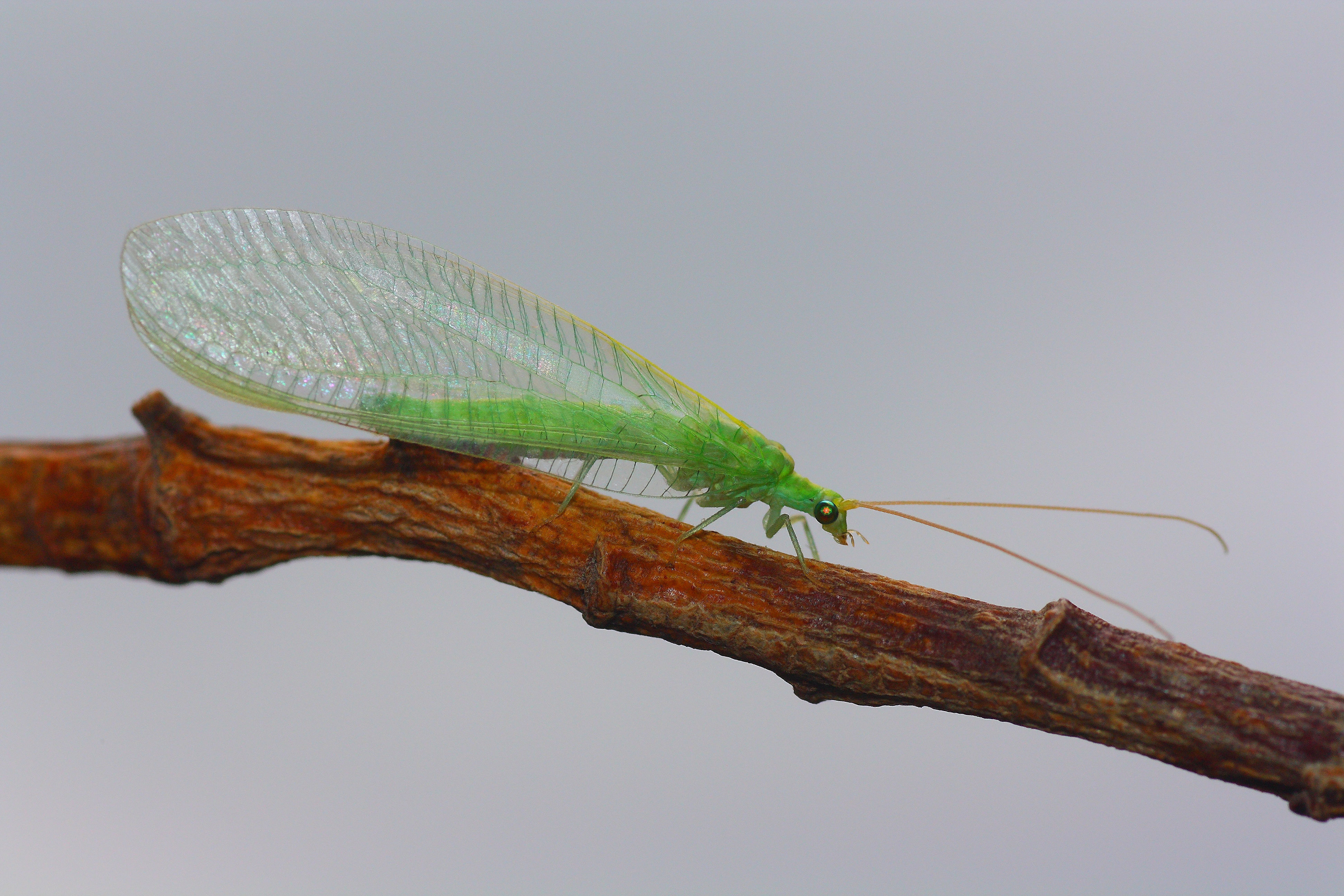DESCRIPTION: Length up to 2cm. A large lacewing that is similar to several smaller species and one or two larger examples. The key identification features are the short antennal basal segments and green second segments, the pale hairs on the front face of the front coxae, the costal margin of the forewing which is concave, the lack of a black spot on the head between the antennae and the wing venation which needs careful scrutiny. BEHAVIOUR: Adults are attracted to light. DISTRIBUTION: Well distributed throughout but not found anywhere in any great numbers. PERIOD: A summer species best seen around June and July. |

